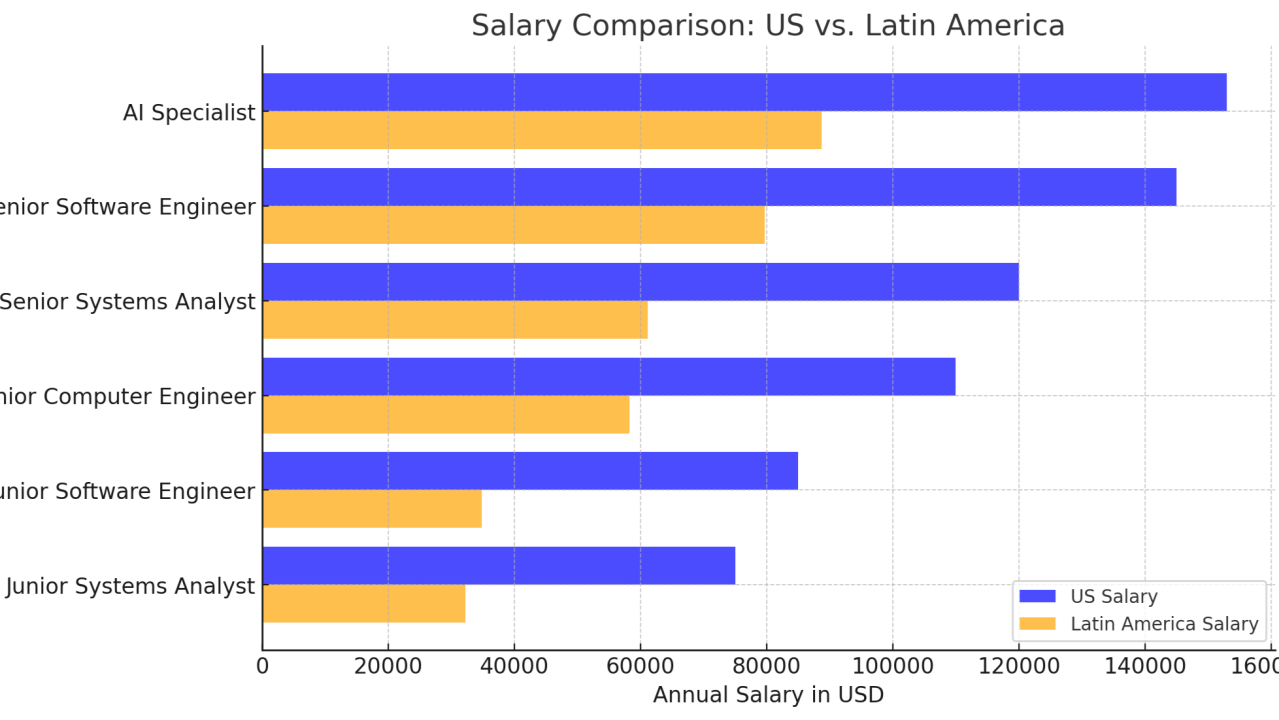
The Shortage of Technology Professionals in the United States
The shortage of technology professionals, including programmers, engineers, and analysts, has intensified in the United States due to the increasing demand for specialized skills and a limited supply of qualified talent.
Growing Demand
The rapid adoption of emerging technologies has significantly increased the need for experts in artificial intelligence (AI) and cybersecurity. Companies across various sectors are investing substantially in AI, leading to fierce competition for professionals with expertise in this field. According to Deloitte, job postings in the U.S. requiring generative AI skills increased by over 1,800% in 2024. (Deloitte)
Supply and Demand Gap
Despite the high demand, the education system has not been able to produce enough graduates in critical fields. CompTIA reports that the replacement rate for tech occupations from 2024 to 2034 is expected to average around 6% annually, equating to approximately 350,000 workers each year. (CompTIA)
Annual Salaries by Role (Comparison: U.S. vs. Latin America)
The following table presents a comparison of average annual salaries for technology professionals in the United States and Latin America (Colombia, Argentina, and Uruguay combined), along with the estimated cost savings when hiring from Latin America. All figures are in U.S. dollars.

As an example, the total annual cost for a technology squad consisting of one Project Manager (PM), one AI Specialist, one Senior Software Engineer, one Junior Software Engineer, and one Systems Analyst in the U.S. amounts to $620,500, whereas hiring the same team in Latin America would cost $329,115, representing an estimated 47% savings.
Industry Impact
The lack of qualified professionals has led industries such as banking to aggressively compete for tech talent, offering advanced AI and machine learning projects to attract these professionals. (Deloitte)
Challenges in Immigration Policies
Immigration policies also play a crucial role in the availability of tech talent. The H-1B visa program, which allows companies to hire highly skilled foreign workers, has been a subject of debate. While some argue that it is essential to fill specialized positions, others believe it may impact job opportunities for domestic workers. (Deloitte)
Conclusion
The shortage of technology professionals in the United States is a multifaceted challenge that requires comprehensive solutions. Addressing this gap will necessitate efforts in education, immigration policies, and talent retention strategies to meet the needs of an increasingly digital economy.

With increasingly demanding consumers, developing a successful product requires more than just knowing about the product itself. You need to understand business, people, technology, design, and… a little bit of everything.

Explore the top free and paid AI tools for 2025, including the best AI chatbots, image and video generators, research assistants, and productivity apps. Compare features, pricing, and top picks for creative and professional use.

"Vibe Coding" is a form of programming where developers interact with code in a conceptual, AI-assisted manner, rather than manually writing each line.

The shortage of technology professionals, including programmers, engineers, and analysts, has intensified in the United States due to the increasing demand for specialized skills and a limited supply of qualified talent.

The need arise from the need to streamline the analysis of exams performed on patients who may present detectable pathologies through imaging studies, assisting the physician in making a faster and more accurate diagnosis.

Researchers at Sakana.AI, a Tokyo-based company, have worked on developing a large language model (LLM) designed specifically for scientific research.